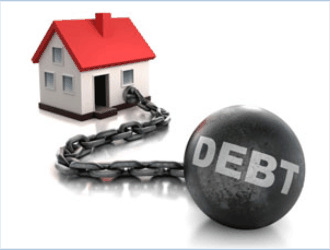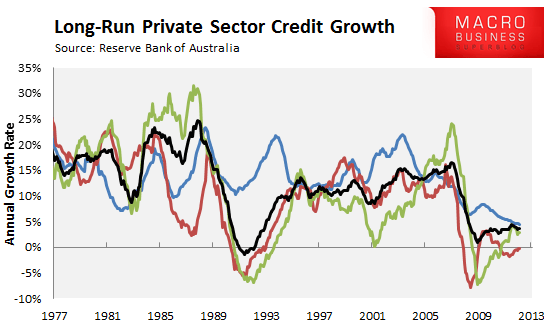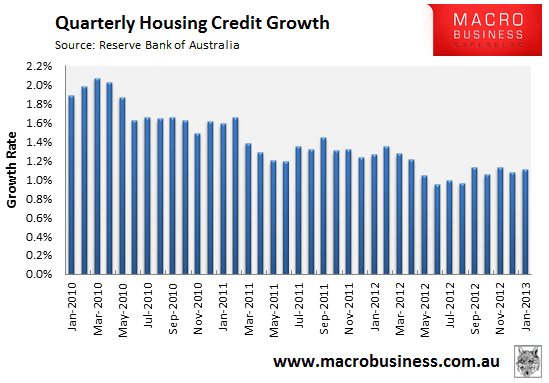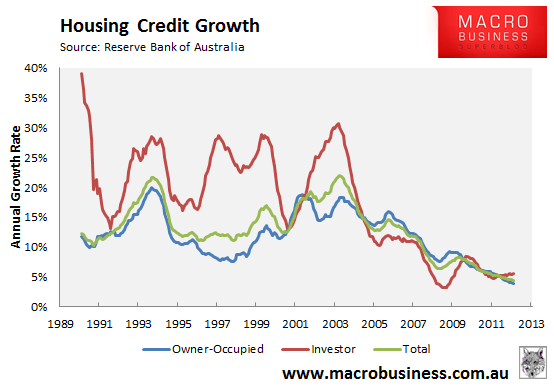
The Reserve Bank of Australia (RBA) has just released the private sector credit aggregates data for the month of January:
Total credit provided to the private sector by financial intermediaries rose by 0.2 per cent over January 2013, after increasing by 0.4 per cent over December. Over the year to January, total credit rose by 3.6 per cent.
Housing credit increased by 0.4 per cent over January, following an increase of 0.3 per cent over December. Over the year to January, housing credit rose by 4.4 per cent.
Other personal credit decreased by 0.1 per cent over January, after increasing by 0.2 per cent over December. Over the year to January, other personal credit decreased by 0.3 per cent.
Business credit was unchanged over January, after increasing by 0.7 per cent over December. Over the year to January, business credit increased by 2.8 per cent.
A chart showing the long-run breakdown in the components is provided below:

As you can see, personal credit growth (-0.1% MoM; -0.1% QoQ; -0.3% YoY) continues to deleverage, whereas business credit growth (0.0% MoM; 0.1% QoQ; 2.8% YoY) and housing credit growth (0.4% MoM; 1.1% QoQ; 4.4% YoY) remains postive in annual terms, but are at subdued levels relative to their long-run average growth rates.
Focusing on the housing market, annual credit growth has now hit a fresh all time (36-year) low of 4.4%. However, as shown by the below chart, housing credit growth looks like it might have bottomed (at least for the time being):

Finally, a breakdown of owner-occupied credit (0.3% MoM; 1.0% QoQ; 3.9% YoY) and investor credit (0.5% MoM; 1.3% QoQ; 5.6% YoY) is provided below:

As you can see, much of the current mortgage demand is being driven by investors, which has also been reflected in recent housing finance data from the Australian Bureau of Statistics.

